In memoriam: Balkrishna V Doshi (1927 – 2023)
Balkrishna V Doshi, one of India’s preeminent architects and the world’s greatest modernists, has died at the age of 95. To honour his memory, we revisit a story from the Wallpaper* archives
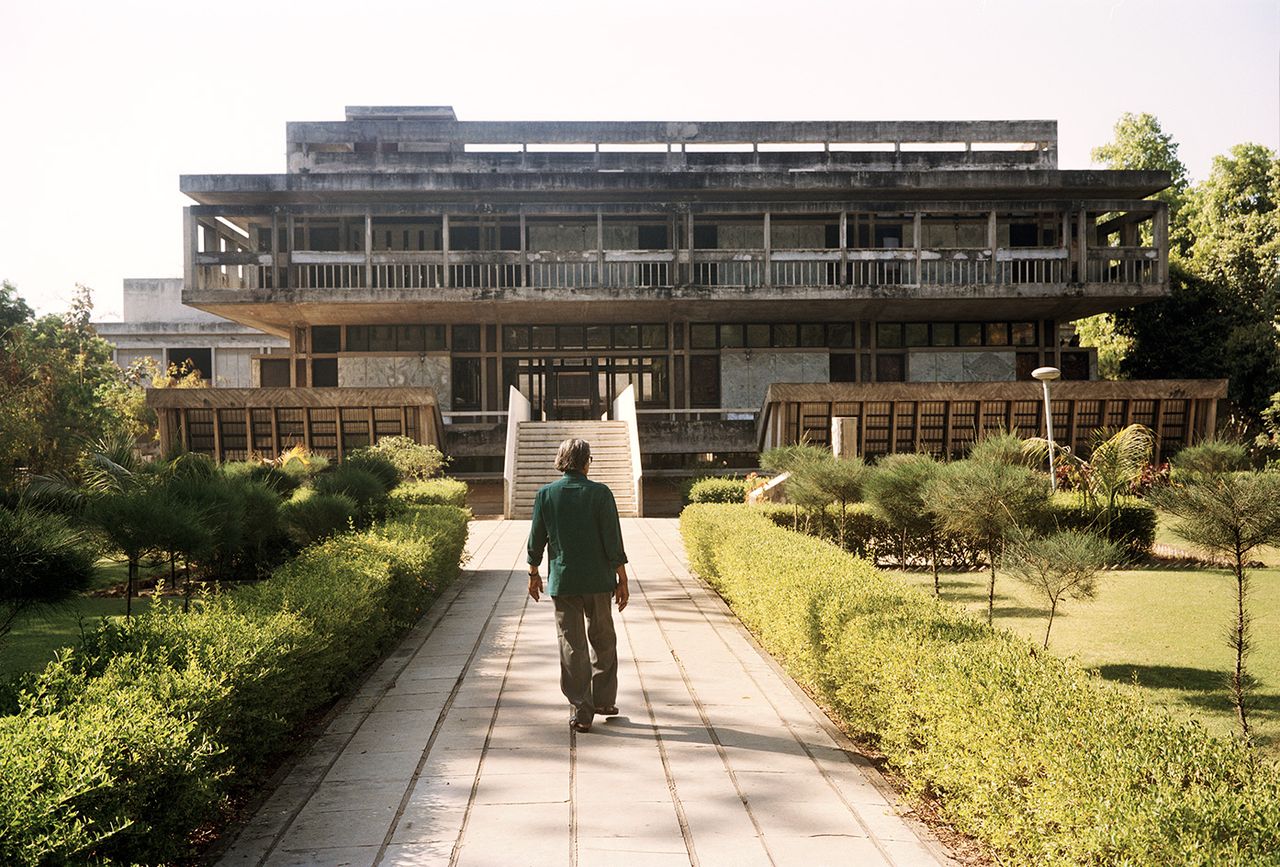
A glance at the dates and it's clear that Balkrishna V Doshi and modern Indian architecture grew side by side. A student at the JJ School of Art in Mumbai when India celebrated its independence in 1947, the architect's career runs alongside the creation of some of the country's most iconic contemporary architecture. From his involvement in the Chandigarh project and India's famous Le Corbusier and Louis Kahn heritage, through to its finest architecture education institution – he designed and founded the School of Architecture and Planning in Ahmedabad in 1962 – Dr Balkrishna Vithaldas Doshi has been an omnipresent figure for a remarkable period of India's built environment.
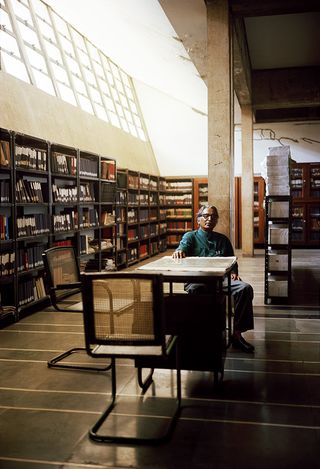
The architect inside the Institute of Indology library in 2011. Doshi built it in 1962 to house thousands of rare Indian books, manuscripts and art
In the words of Balkrishna V Doshi (1927 – 2023)
Having personally had a hand in forming what many people see as modern Indian architecture, Doshi's views about how the country's architecture has shaped and will shape its identity carry weight. His position is very much about the bigger picture. ‘Social identity is Indian identity; we are gregarious people,’ he says. ‘Porosity, change and transformation form the Indian identity. And there is no single aesthetic, as stylistic identity is not a real identity. India is not about a production line, it is not about doing things in a certain way.’
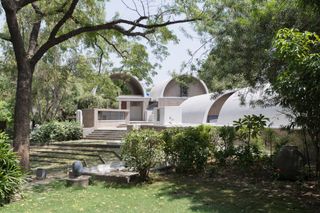
Doshi is adamant about addressing the architectural concerns of contemporary India – from the country's painful inequalities to its infrastructure and sustainability issues. It is all about linking great work, especially on an urban level, to India's wider context. 'How can we place our work on a larger canvas? I think this is our problem; the profession is not addressing issues on a larger scale,' he says. 'This doesn't mean we need to eliminate the individual, but architectural work must make some references to the concerns of the people.'
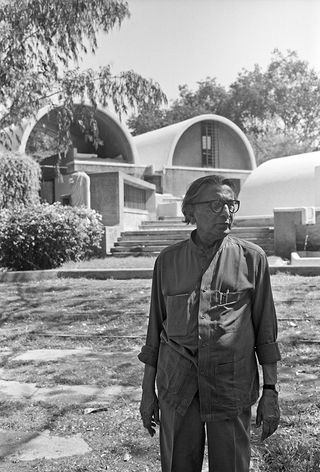
His practice Vastu-Shilpa, which he founded in 1956 (a research institute and foundation of the same name followed in 1962), certainly reflects this. Set up as a partnership firm, where each partner also has their own projects under the Vastu-Shilpa umbrella, the firm has a dynamic research and urban planning leg that works towards translating cultural and climatic characteristics into appropriate architectural forms from the smaller to the larger scale.
Born in Pune in 1927, Doshi is now well into his eighties, but shows no signs of slowing down. 'I still go to the office every day,' he says, when, that is, he isn't travelling the world attending lectures and conferences. Internationally respected by his peers, Doshi has made his mark as a prolific thinker and teacher, perfecting the application of Le Corbusier's modernist teachings - absorbed during a long stint at the master's Indian office in the 1950s – within the Indian context.
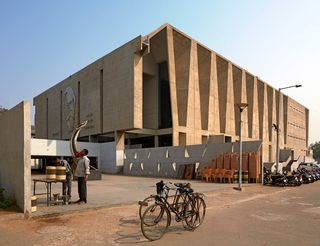
Tagore Memorial Hall
His sense of community in relation to architecture is equally strong. 'I began my career talking about low-cost housing and housing for the poor. This is how one has to work, at the lowest level. Because there is a lot more to learn there. The poor are the ones who are ingenious, frugal, simple, their socioeconomic ties are fantastic,' says Doshi. 'And this is the role of architecture; to be a catalyst for change.'
So where does Indian architecture stand today in relation to the rest of the world? There is no doubt that there is plenty of potential in the country. 'There are opportunities for work here both for the iconic, as well as the barefoot architect,' says Doshi. 'The question is how do these really work in the context of the quality that India stands for.'
Wallpaper* Newsletter
Receive our daily digest of inspiration, escapism and design stories from around the world direct to your inbox.
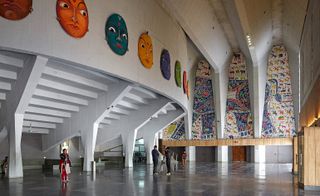
The entrance lobby at Tagore Memorial Hall
Globalisation is a further opportunity that India should be well placed to handle, he explains, having itself been born from a melange of cultures, people and traditions over centuries. 'In the past, people were working towards absorbing and finding solutions that were appropriate to the place. That concept should be even more relevant now.'
Perhaps, unsurprisingly, it all comes down to the eternal dilemma of sustainability at all levels. 'It really is the fundamental question that needs to be asked when looking for any local identity. All cultures have talked about this,' says Doshi. 'Our culture is like blotting paper; you don't know which layer has happened when. I think that culture is our strength. Despite diverse languages, diverse climates, diverse traditions, we thrive on our interaction with one another.'
A version of this article was first published in the June 2011 issue of Wallpaper*
Ellie Stathaki is the Architecture & Environment Director at Wallpaper*. She trained as an architect at the Aristotle University of Thessaloniki in Greece and studied architectural history at the Bartlett in London. Now an established journalist, she has been a member of the Wallpaper* team since 2006, visiting buildings across the globe and interviewing leading architects such as Tadao Ando and Rem Koolhaas. Ellie has also taken part in judging panels, moderated events, curated shows and contributed in books, such as The Contemporary House (Thames & Hudson, 2018), Glenn Sestig Architecture Diary (2020) and House London (2022).
-
 Rétromobile revisits some of the icons of car design, along with their modern descendants
Rétromobile revisits some of the icons of car design, along with their modern descendantsWe tour the halls of Rétromobile Paris 2025 and take in remastered automotive classics, futuristic record-breakers and mighty monographs
By Jonathan Bell Published
-
 Designer Danny Kaplan’s Manhattan showroom is also his apartment: the live-work space reimagined
Designer Danny Kaplan’s Manhattan showroom is also his apartment: the live-work space reimaginedDanny Kaplan’s Manhattan apartment is an extension of his new showroom, itself laid out like a home; he invites us in, including a first look at his private quarters
By Diana Budds Published
-
 Ulla Johnson’s collaboration with artist Julie Hamisky on the A/W 2025 runway is blooming lovely
Ulla Johnson’s collaboration with artist Julie Hamisky on the A/W 2025 runway is blooming lovelyUlla Johnson and French artist Julie Hamisky have created 12 new jewellery pieces for the designer's A/W 2025 runway
By Hannah Silver Published
-
 Meet Minnette de Silva, the trailblazing Sri Lankan modernist architect
Meet Minnette de Silva, the trailblazing Sri Lankan modernist architectSri Lankan architect Minnette de Silva is celebrated in a new book by author Anooradha Iyer Siddiq, who looks into the modernist's work at the intersection of ecology, heritage and craftsmanship
By Léa Teuscher Published
-
 Palm Springs Modernism Week 2025: let the desert architecture party begin
Palm Springs Modernism Week 2025: let the desert architecture party beginPalm Springs Modernism Week 2025 launches on 13 February, marking the popular annual desert event’s 20th anniversary, celebrated this year through more midcentury marvels than ever
By Carole Dixon Published
-
 Inside Bell Labs, the modernist vision behind Severance's minimalist setting
Inside Bell Labs, the modernist vision behind Severance's minimalist settingWe explore the history of Bell Labs - now known as Bell Works - the modernist Eero Saarinen-designed facility in New Jersey, which inspired the dystopian minimalist setting of 'Severance'
By Jonathan Bell Published
-
 We zoom in on Ontario Place, Toronto’s lake-defying 1971 modernist showpiece
We zoom in on Ontario Place, Toronto’s lake-defying 1971 modernist showpieceWe look back at Ontario Place, Toronto’s striking 1971 showpiece and modernist marvel with an uncertain future
By Dave LeBlanc Published
-
 Tour 21 lesser-known modernist houses in Europe
Tour 21 lesser-known modernist houses in EuropeTake a tour of some of Europe's lesser-known modernist houses; architectural writer and curator Adam Štěch leads the way, discussing the 20th-century movement's diversity under a single vision
By Adam Štěch Published
-
 Frank Lloyd Wright’s Weisblat House, a Usonian modernist Michigan gem, could be yours
Frank Lloyd Wright’s Weisblat House, a Usonian modernist Michigan gem, could be yoursFrank Lloyd Wright’s Weisblat House in Michigan is on the market – a chance to peek inside the heritage modernist home in the countryside
By Audrey Henderson Published
-
 The case of the Ontario Science Centre: a 20th-century architecture classic facing an uncertain future
The case of the Ontario Science Centre: a 20th-century architecture classic facing an uncertain futureThe Ontario Science Centre by Raymond Moriyama is in danger; we look at the legacy and predicament of this 20th-century Toronto gem
By Dave LeBlanc Published
-
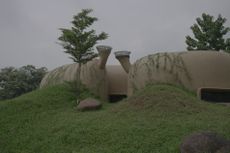 Nine emerging Indian architecture studios on a mission to transform their country
Nine emerging Indian architecture studios on a mission to transform their countryWe survey the emerging Indian architecture studios and professionals, who come armed with passion, ideas and tools designed to foster and bolster their country's creative growth
By Ellie Stathaki Published